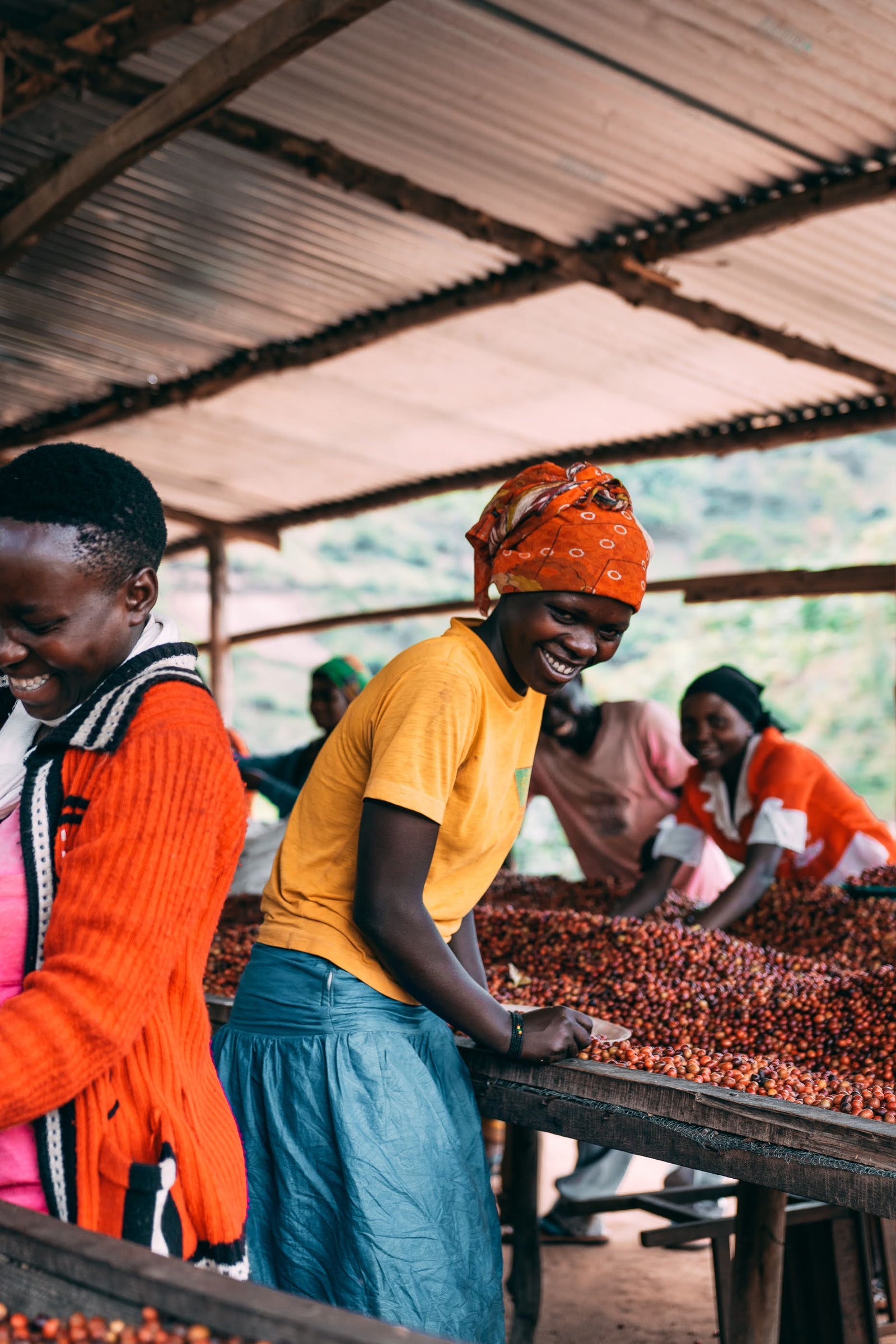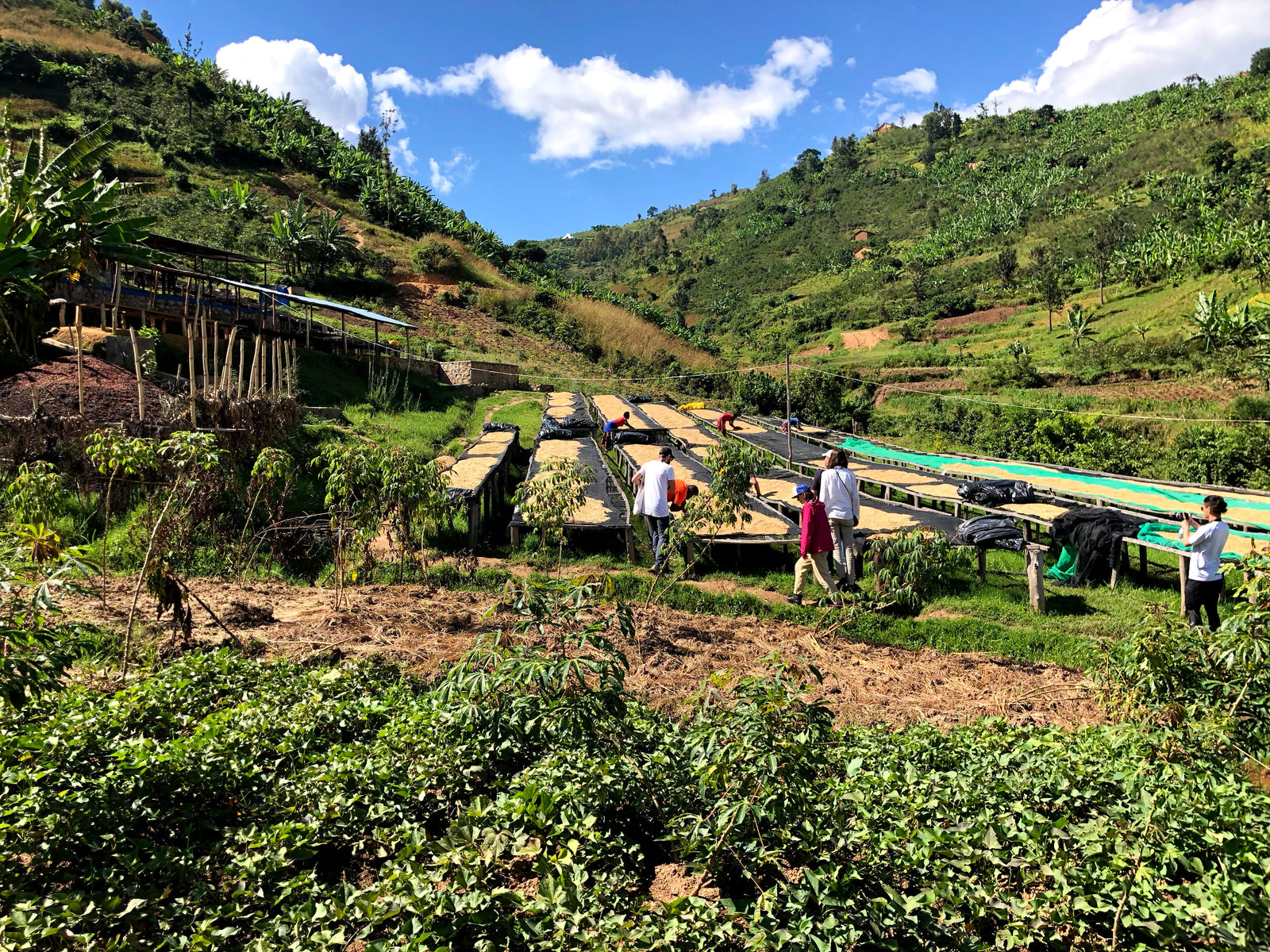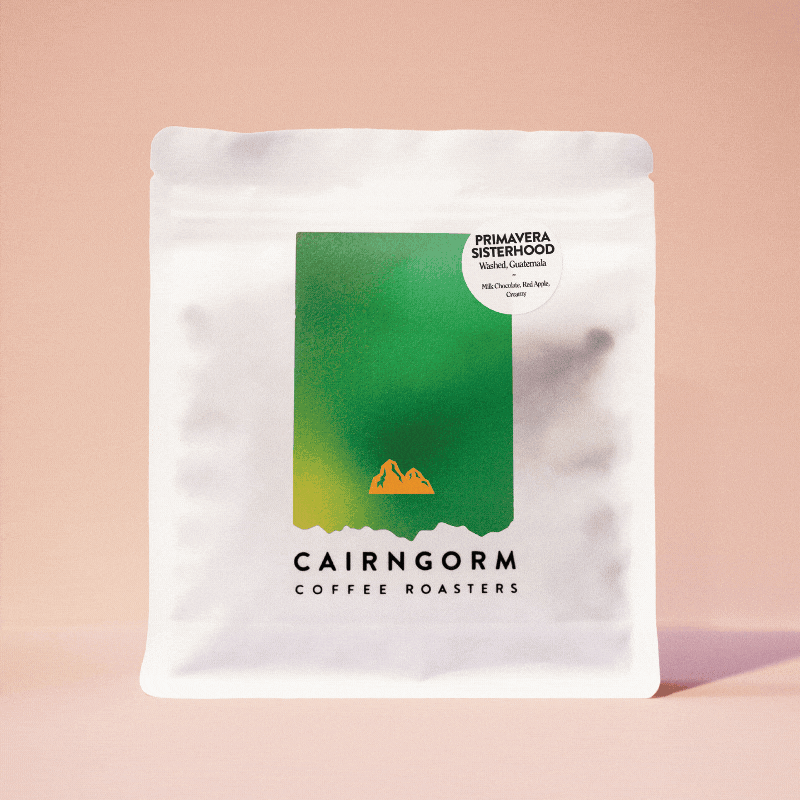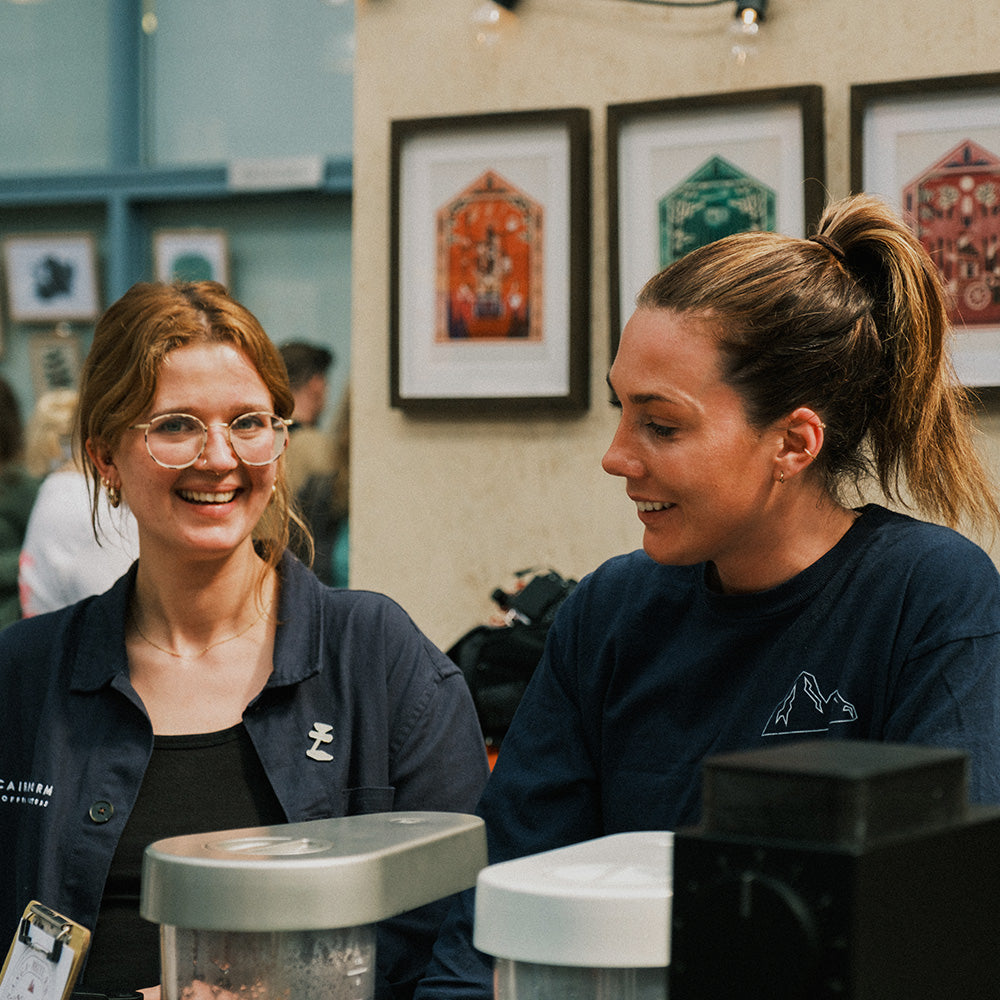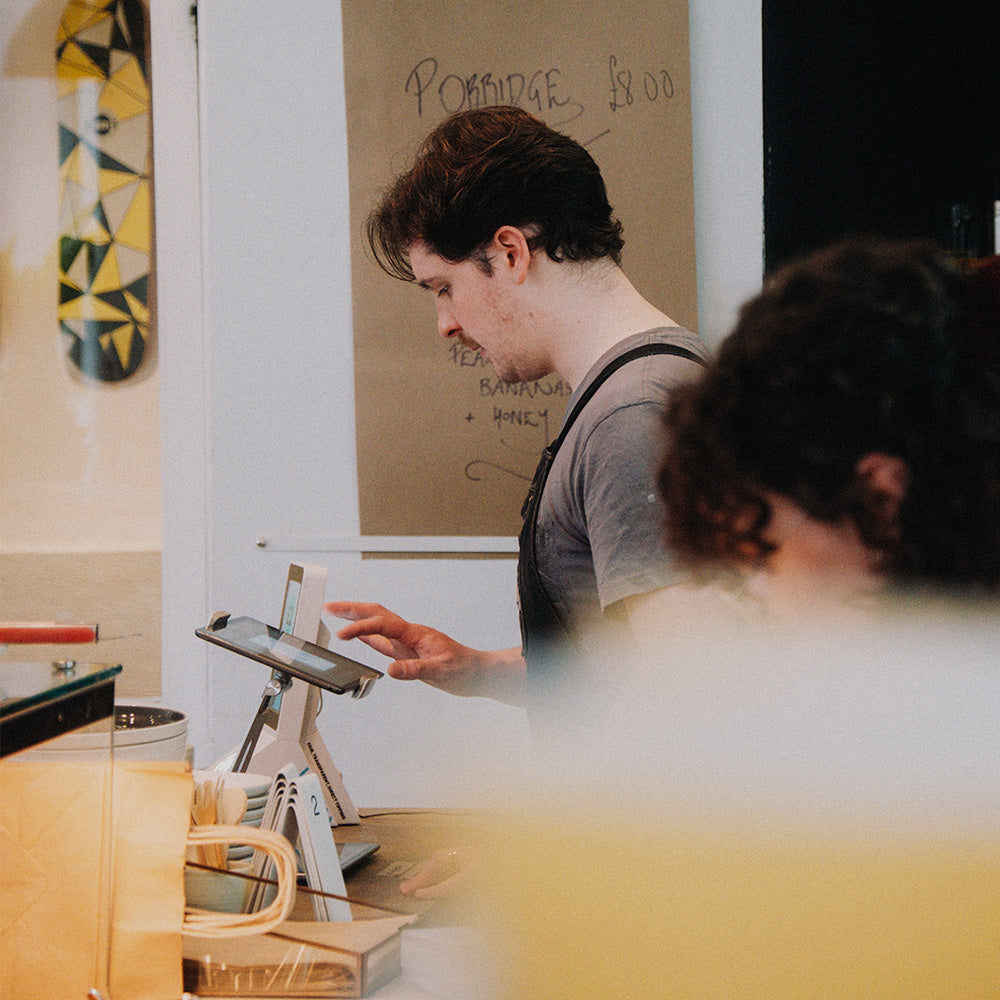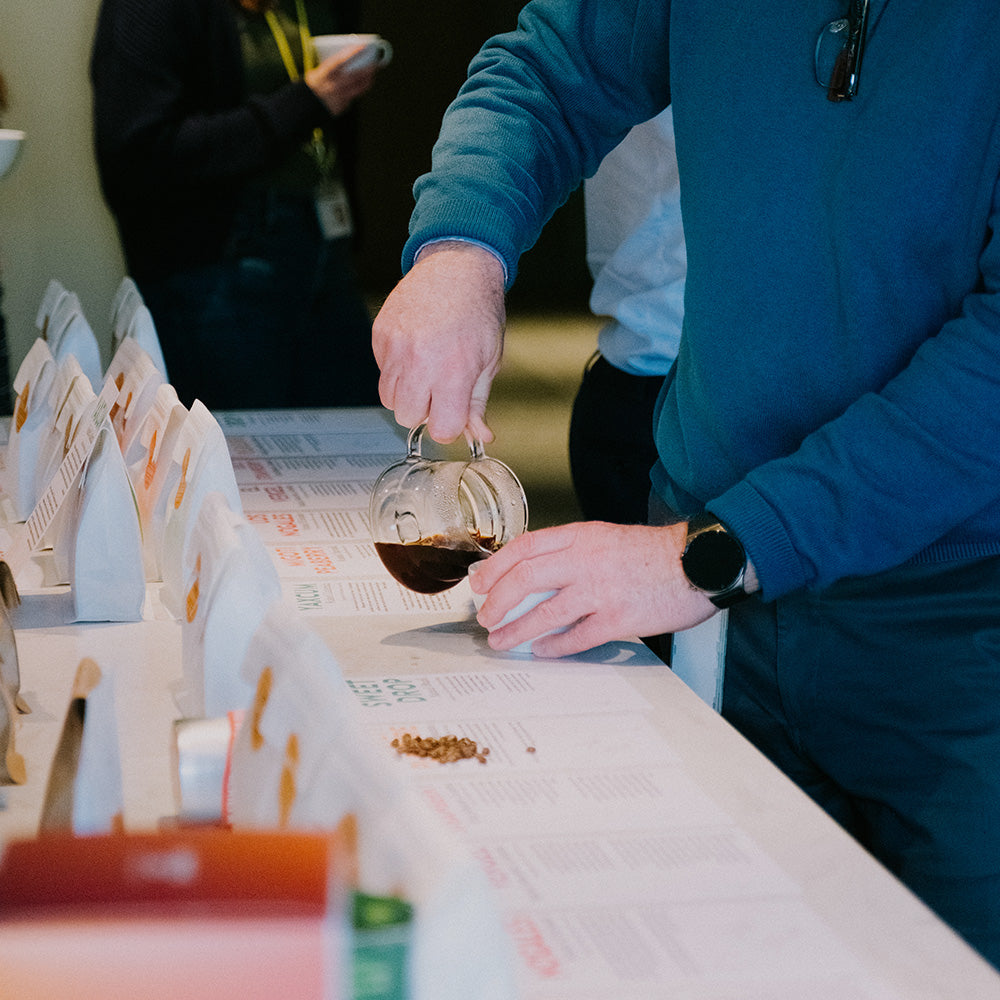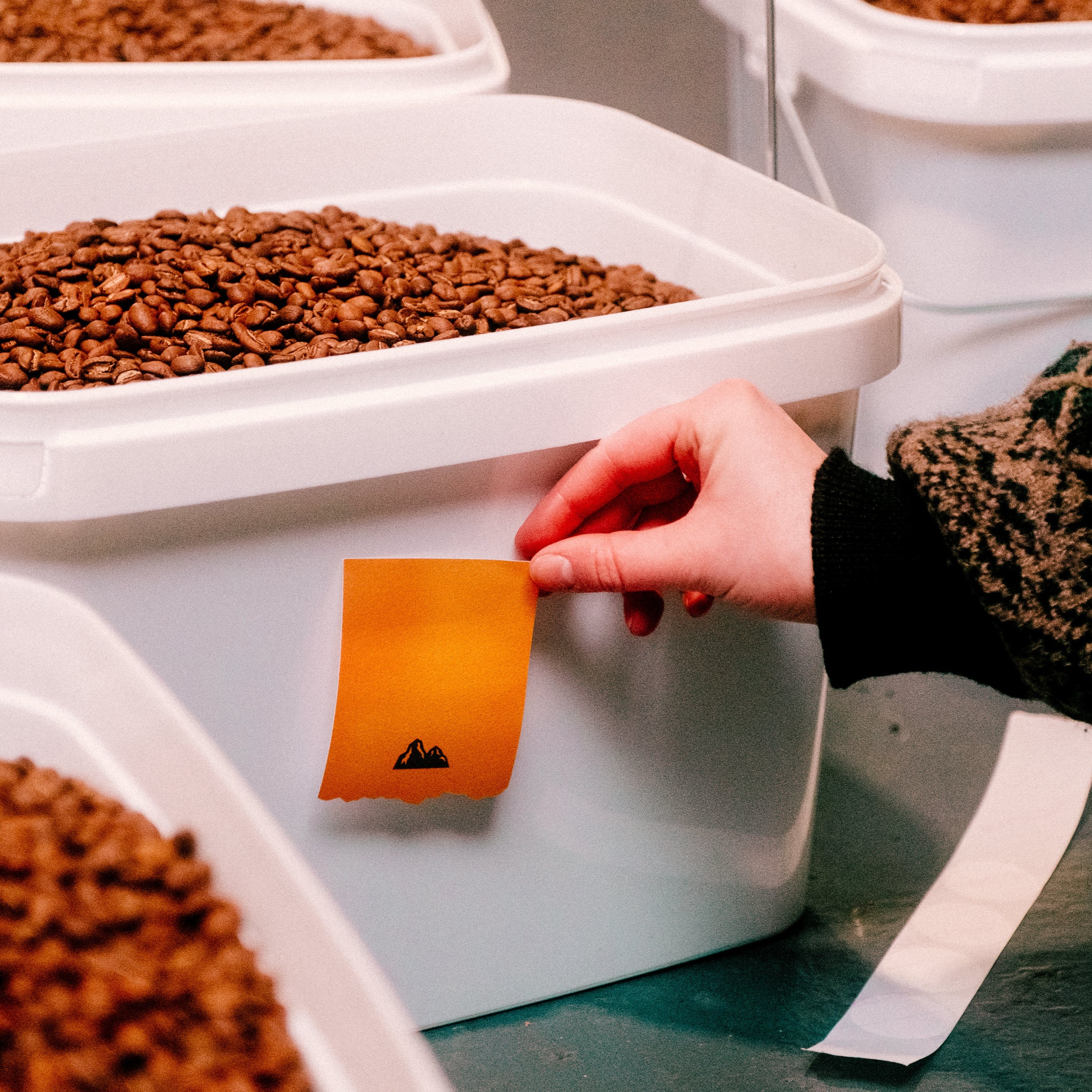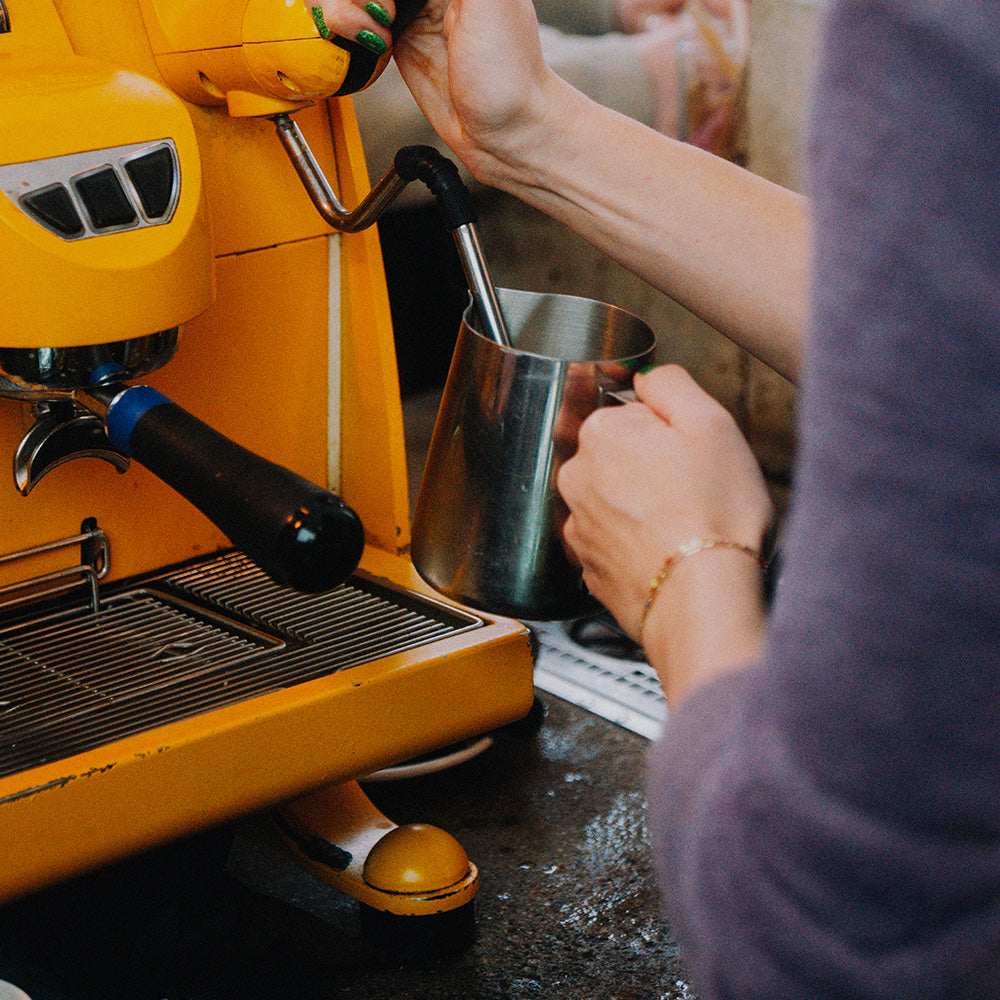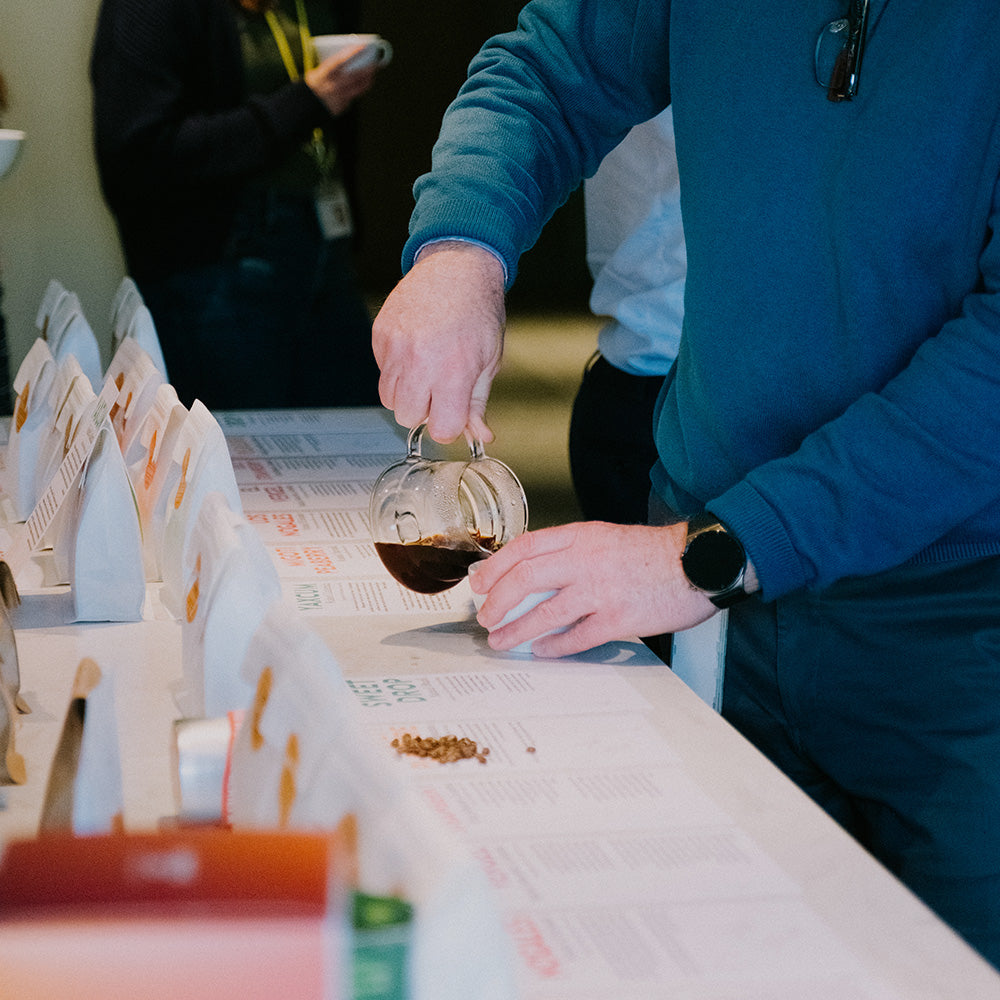All cherry is hand-sorted before a pre-pulp float, underripe or damaged cherry is removed, along with any foreign objects. Cherry is then floated in pre-pulping tanks removing any floaters and later pulped. Next, coffee is fermented in dedicated concrete fermentation tanks for an average of 12 hours. During this time, the fermented parchment is agitated several times through the day by way of ceremonial foot-stomping.
Dried on traditional African raised beds, cherry is meticulously hand sorted before drying, removing any visually under-ripe cherry, coffee is then floated to further separate any low-density cherry. We have experimented with many different honey processing techniques. We now employ the technique of pre-pulp floatation to remove debris and low-density beans, running the cherry through the de-pulper to remove the skin but retaining almost all the mucilage, then finally a gentle rinse to remove any floaters post pulp.
These honey processed coffees render an orange colouring. The drying conditions at Kilimbi are ideal for ensuring optimal post-pulp drying. Coffee is laid on the drying beds between 12 pm and 3 pm ensuring maximum exposure to the sun during the warmest time of the day, this minimizes the chance of coffee becoming phenolic or over fermented. The coffee is initially laid out very thin; this is to ensure mucilage has maximum exposure to the sun when it is very wet. As These honey processed coffees render an orange colouring. The drying conditions at Kilimbi are ideal for ensuring optimal post-pulp drying. Coffee is laid on the drying beds between 12 pm and 3 pm ensuring maximum exposure to the sun during the warmest time of the day, this minimizes the chance of coffee becoming phenolic or over fermented. The coffee is initially laid out very thin; this is to ensure mucilage has maximum exposure to the sun when it is very wet. As the parchment dries, it is heaped into larger piles that give a thermal mass to the coffee while it continues to dry. This enables the moisture content of the parchment to homogenise during drying enabling more even drying results. The coffee is dried for 35 days, turned constantly when the sun is high and covered during the night.




